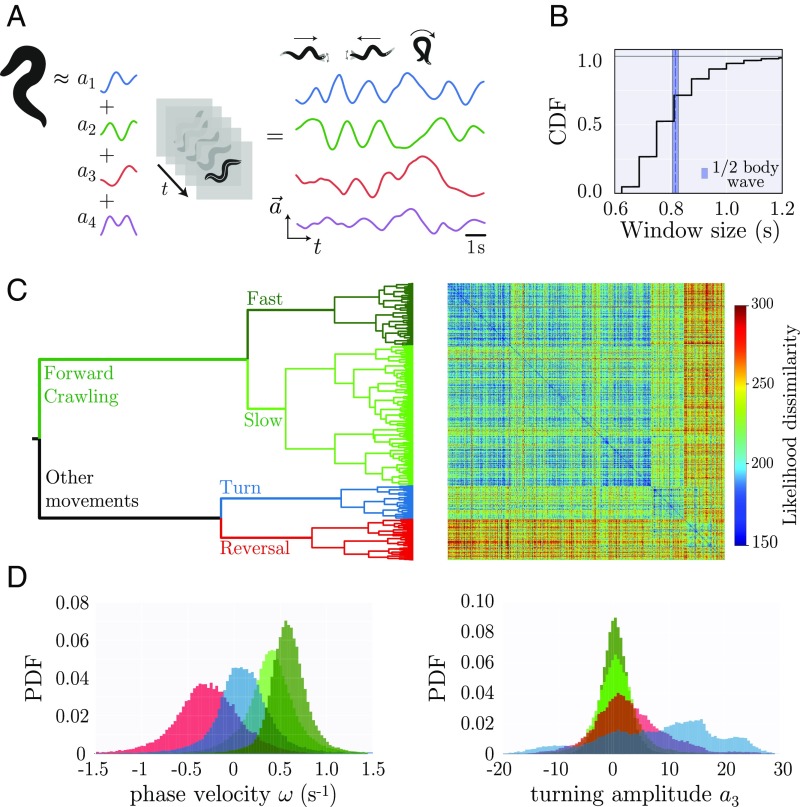Fig. 3.
Locally linear analysis of C. elegans posture dynamics reveals a rich space of behavioral motifs. (A) We transform image sequences into a 4D posture dynamics using “eigenworm” projections (35), where the first two modes describe a body wave, with positive phase velocity for forward motion and negative when the worm reverses. High values of occur during deep turns, while captures head and tail movements. (B) The cumulative distribution function (CDF) of window sizes reveals rapid posture changes on the timescale of the locomotor wave (the average duration of a half body wave is shown for reference). (C) Likelihood-based hierarchical clustering of the space of linear posture dynamics. At the top of the tree, forward crawling models separate from other behaviors. At the next level, forward crawling splits into fast and slower body waves, while the other behaviors separate into turns and reversals. Hierarchical clustering results in a similarity matrix with weak block structure; while behavior can be organized into broad classes, large variability remains within clusters. (D) Cluster branches reveal interpretable worm behaviors. We show the probability distribution function (PDF) of body-wave phase velocities and turning amplitudes at the fourth-branch level of the tree. In the first forward state (dark green), worms move faster than in the second branch (light green). In the turn branch (blue), the phase velocity is centered around zero, and high values of indicate larger turning amplitudes. In the reversal branch (red), we find predominantly negative phase velocities.

